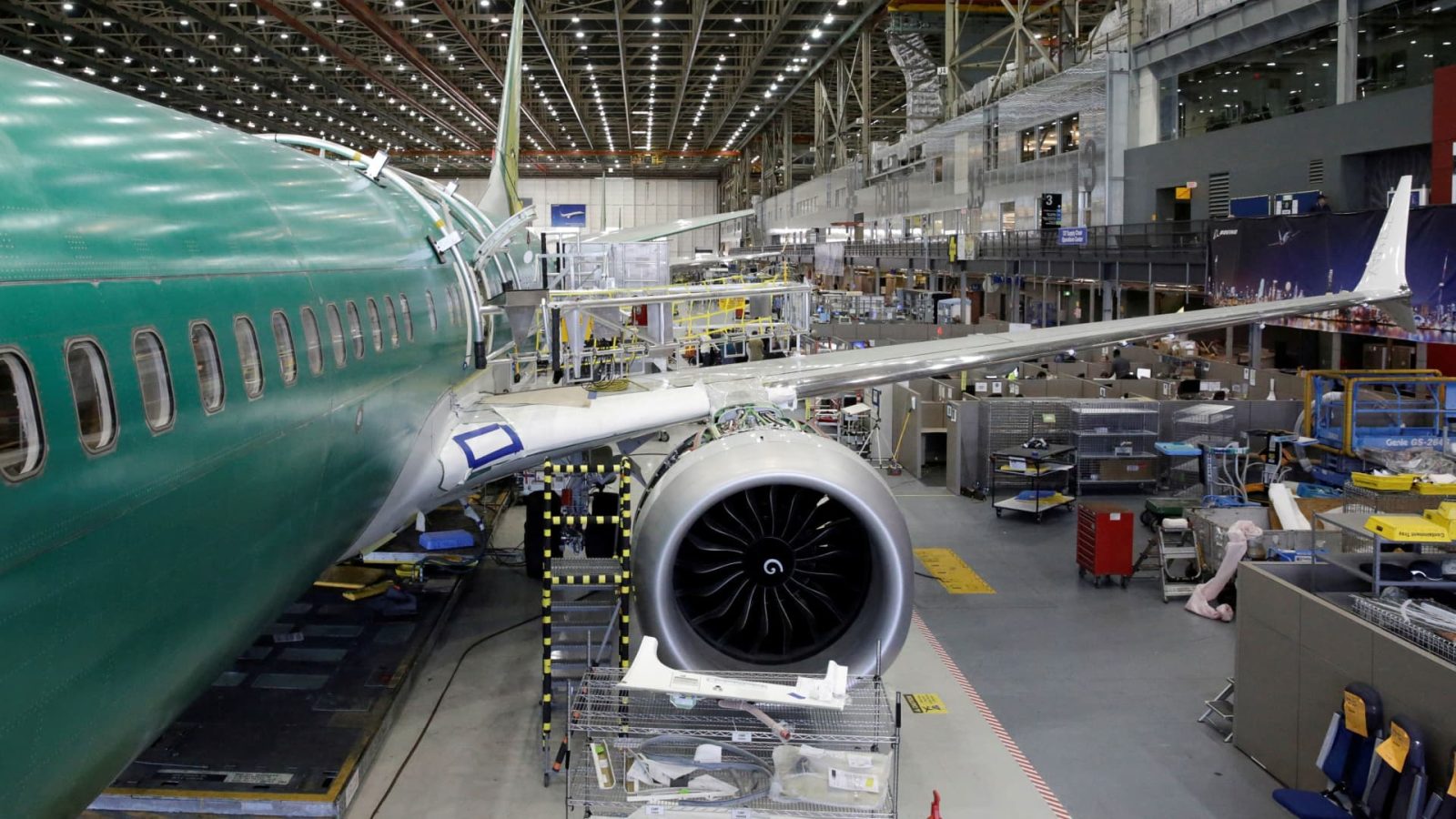Boeing said Wednesday it will deliver fewer 737 Max aircraft than it previously expected this year as it works through production flaws detected on some of the bestselling aircraft.
The company expects to hand over between 375 and 400 of its workhorse plane this year, down from a previous estimate of 400 to 450, which Boeing’s CFO reaffirmed during a conference last month. It marks a headwind for Boeing and for airline customers eager to receive new, more fuel-efficient jetliners.
Boeing maintained its expectations for 2023 free cash flow of $3 billion to $5 billion, despite the production problems. The company’s shares were down more than 1% in morning trading.
“I have heard those outside our company wondering if we’ve lost a step. I view it as quite the opposite,” CEO Dave Calhoun said in an employee note Wednesday, as the company reported third-quarter results. “Most importantly, we’ve worked hard to instill a culture of speaking up and transparently bringing forward any issue, no matter the size, so we can get things right for the future.”
He said the company now can fix those issues “once and for all.”
The 737 problems stem from misdrilled holes in the fuselages, which are produced by Spirit AeroSystems, which replaced its CEO earlier this month. Boeing and Spirit reached a new pricing agreement in October aimed at shoring up the key supplier.
Boeing has been working to increase output of new planes to meet demand for a recovery in air travel after the Covid pandemic. Budget carrier Ryanair, for one, recently cut its winter schedule, blaming delivery delays from Boeing.
Sales in the manufacturer’s commercial aircraft unit rose 25% to $7.88 billion from the third quarter of 2022, boosted by deliveries of wide-body 787 Dreamliner planes, though lower 737 deliveries and abnormal production costs led to a negative operating margin of 8.6%.
Boeing said it plans to ramp up output of the 737 to 38 planes per month by year’s end and said it is transitioning to Dreamliner production of five per month. It reaffirmed its estimate to hand over 70 to 80 Dreamliners this year.
Its defense unit was also losing money in part from a $482 million loss on its Air Force One program because of “higher estimated manufacturing cost related to engineering changes and labor instability,” as well as a $315 million loss on a satellite contract.
Here’s how the company performed during the period ended Sept. 30, compared with estimates from LSEG, formerly known as Refinitiv:
- Adjusted loss per share: $3.26 vs. $2.96
- Revenue: $18.10 billion vs. $18.01 billion
Boeing’s net loss narrowed to nearly $1.64 billion, or $2.70 a share, for the third quarter compared with the year-earlier period when it had a loss of $3.31 billion, or $5.49 a share. Adjusting for one-time items, mostly related to pension plans, the company lost $3.26 per share, a wider-than-expected adjusted loss.
Revenue rose 13% from the same three-month period a year ago to $18.10 billion, slightly ahead of analysts’ estimates.
Boeing will hold a call with analysts at 10:30 a.m. ET when executives will face questions about its production pace, demand and how it expects to improve margins in its defense unit.
Don’t miss these CNBC PRO stories:
Read the full article here









Leave a Reply